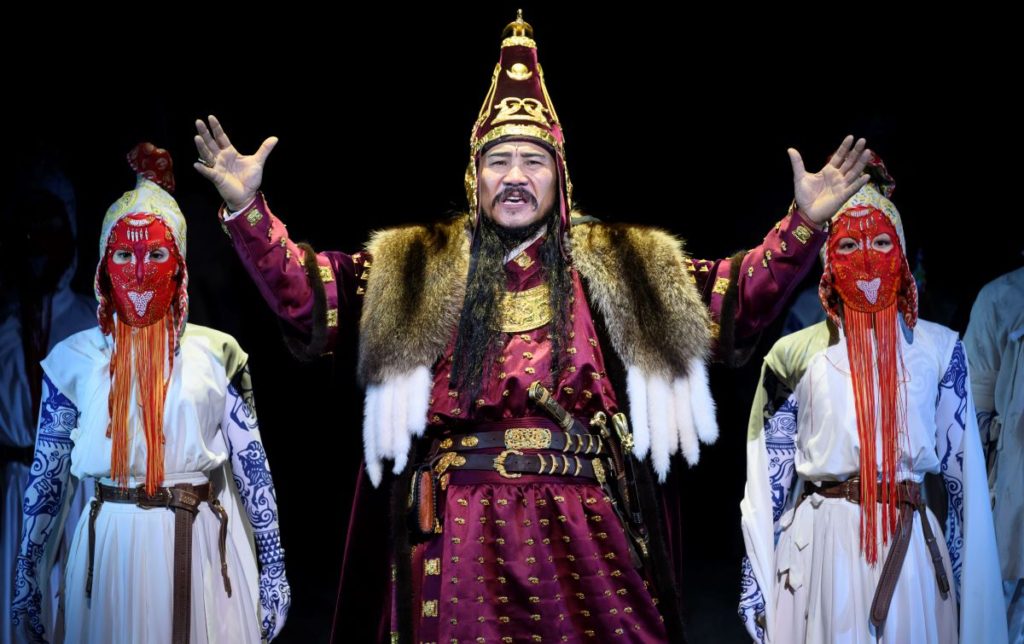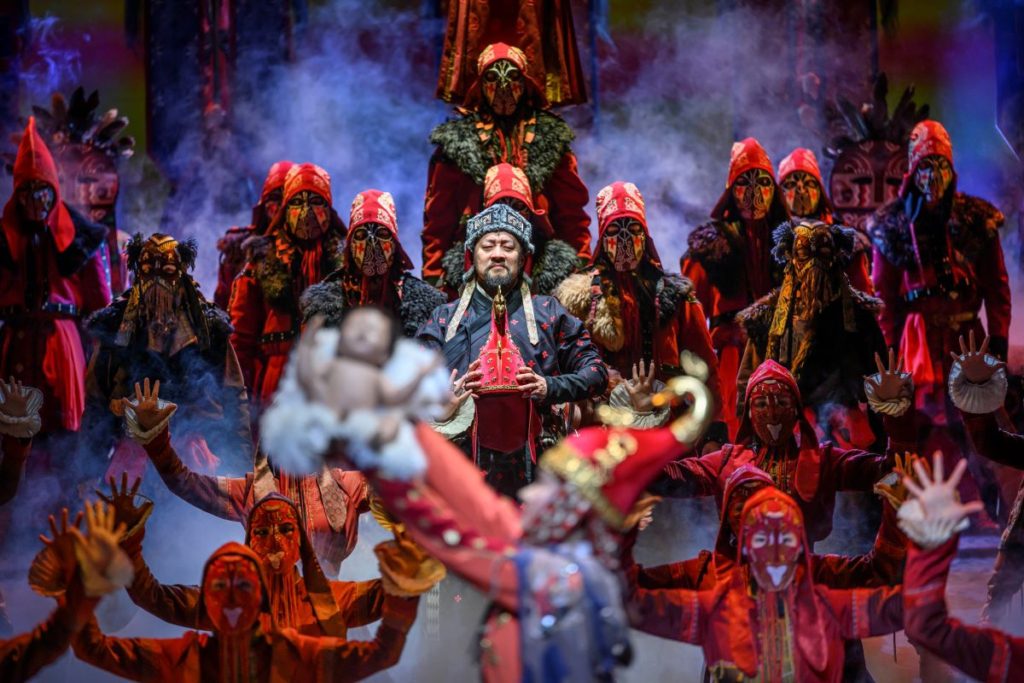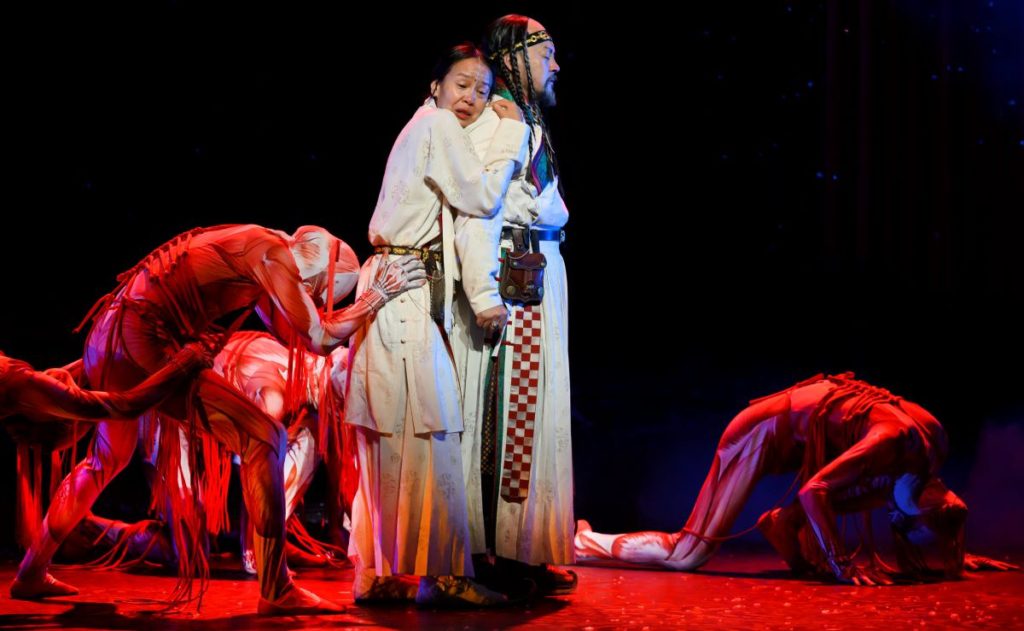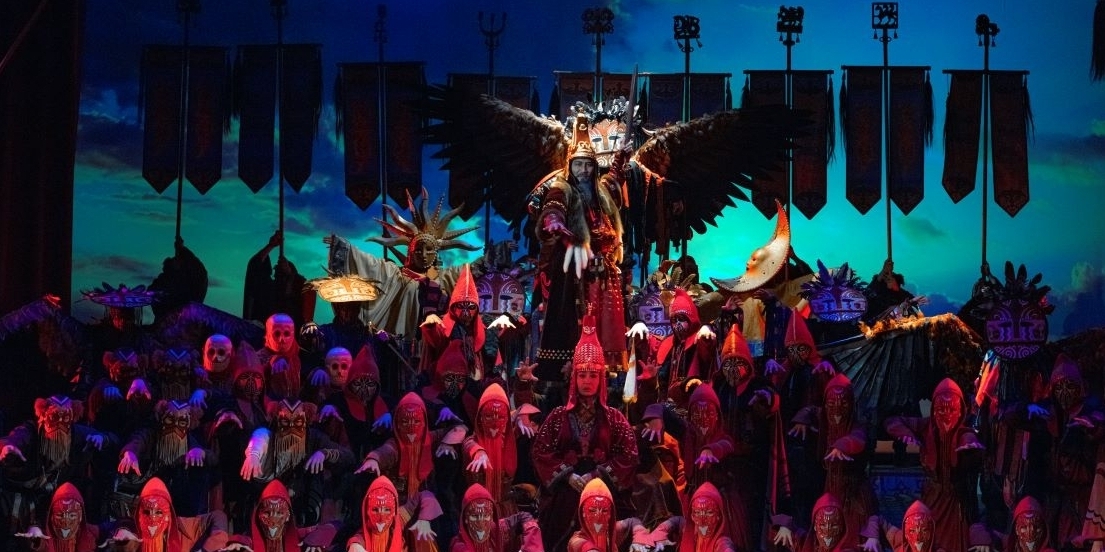Epic accounts of Asiatic history, crammed with extravagant dance, music and costumes, sweep through London theatres with some regularity; and it is very rare to find one that performs to a superlative standard according to every marker of grand scale. But such is ‘The Mongol Khan’, playing now at the Coliseum until early December.
This production comes to London in part to mark sixty years of diplomatic relations between this country and Mongolia, where it has already enjoyed great success. It originated in a popular verse play, now translated into English surtitles by John Man with the text given further dramatic shape by Timberlake Wertenbaker. Director Hero Bataar has coordinated a huge and hugely talented cast and creative team which fleshes out the original into a true epic on the theme of ‘uneasy is the head that wears the crown.’ Indeed in some ways you could say without exaggeration that this show – part drama, part opera, part musical – is the Mongolian equivalent of Shakespeare’s History Plays – a dramatisation of a mythical history of love, life, war and rulership on the Steppes of Central Asia.

The plot itself is a familiar and universal one addressing the mutually incompatible demands of monarchy and family. Set in the mythical Hunnu court of two thousand years ago, ruler Archug has fathered two children with each of his queens. But there is (justified) doubt as to whether one of them is in fact his own. Estranged queen Tsetser and her paramour, chief minister Egereg, arrange for the babies to be swapped so that their offspring and futures are guaranteed. However this prince grows up with a mental disability that causes highly erratic mood swings and behaviour so his father disinherits him, which in turn leads to the death of Gurgel, his apparent mother, the consort whom the khan truly loves. The tragic circle completes itself as the chief minister murders the surviving prince to preserve his position, and after a final battle Archug is left as solitary survivor and selfless defender of the interests of the state.

What brings this scenario to such compelling life is the painterly way in which each scene is constructed as a detailed, pulsating tableau using the full palette of theatrical media. All the leads have power and presence in their acting and delivery, in both scenes of public ritual and ceremony and conflict and in more intimate moments, whether of conspiracy, remonstration or grief. But at every point they are surrounded with mimetic empathy by a chorus of choreographed acolytes whose reactions mirror the action and emotions on stage. This is rendered choreographically with immense and moving skill as crowds shiver, shudder or exult as one. Here the impression is intensified by both music and costume. Amplified traditional Mongolian instruments and choral techniques are deployed to impressive effect and a quite staggering range of colours and textures pass in front of our eyes as one exotic panoply follows another. Lest this all sound fairly static, it should be said that the director ensures that there is always plenty of dynamic movement within the layers of a crowded stage and that scene changes are rapid, utilising the full space in the Coliseum’s fly system for curtains, scrims and scenery. Bataar’s background in painting and anime is crucial to the visual concept and execution as he explains in an interview with Rivka Jacobson on this site.

It is a truism to say that this is a unique show, the like of which we won’t see again, and therefore on its own terms it is a must-see. It is also a perfect match for the Coliseum, built originally for this scale of production, and refreshingly full to capacity on press night.

